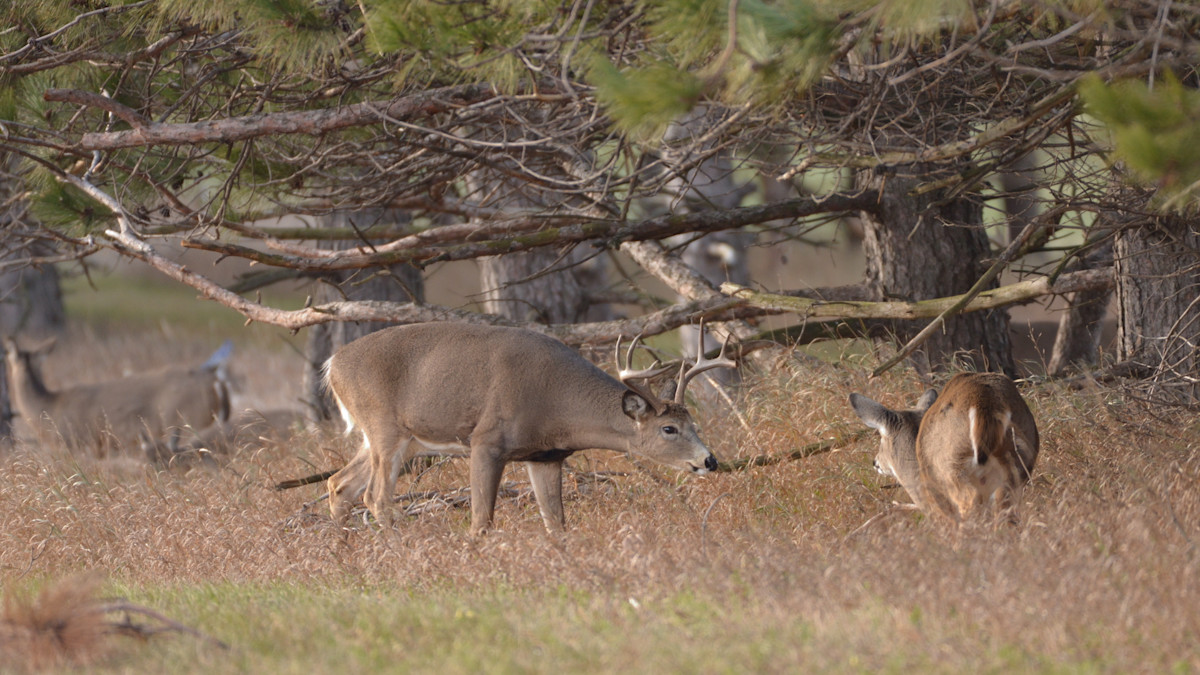
There has been a pile of conception studies conducted on deer throughout the whitetail’s range. If you geek out and look through a few of them, you’ll see consistent conclusions when it comes to conception dates.
Roughly 80% of does are bred during the rut. This is no surprise. It also leaves the remaining 20% to less traditional timing. Some cycle early, in September and October, while others cycle a month or two later and contribute to the second rut.
The breeding season can last for four or five months, but it reaches a fever pitch during early- to mid-November in the North country, and a bit later farther south. Many of the studies, which take gestation into account and then work backward to likely conception dates, come to the same conclusion—by mid-November the foreplay is over and it becomes time to make new deer.
This means that if you didn’t fill your tag in late October or early November, don’t fret. The best might be yet to come.
Lockdown Lies
If you talk to seasoned rut hunters, they’ll rarely mention the lockdown phase of the rut without making it sound like they are prepping for a colonoscopy. Once breeding starts, bucks will lay low with a single doe for 24 to 48 hours at a pop. Obviously, that cuts down on movement.
It’s also a sure thing that not every buck will be locked down the whole time. It doesn’t work that way. If you don’t believe that, take a couple of trail cameras out into the woods, put them on your best terrain traps, and just leave them. You won’t have tons of chasing and little buck activity on your cameras, but every couple of days you might have a good one cruise through.
I’ve done this for several years on a couple of properties, and it’s eye-opening. Where I hunt in northern Wisconsin, the deer numbers are pretty bad. We hunted parts of 18 days this season up there and saw exactly three deer, if you want to understand how bad. Even with dismal deer numbers, I still get pictures of decent bucks every couple of days. While the frequency isn’t great, it also portends good things if you have at least a few days to hunt in a row.
Mature Bucks Are Efficient
The thing that makes the pre-rut so fun is that everyone comes to the party. The little bucks can’t help themselves and they chase like crazy. The medium-sized deer usually do as well. The mature deer will play along, but they aren’t as reliable as the forkies. Mature deer mostly don’t ditch their survival instincts to join the action when it’s a week or two too early.
This changes by the mid-week of November. When the does are actually close to breeding, the mature bucks know it. This coincides with a lot of hunters giving up on the whole thing, and it turns into a different type of hunt. At this point, it’s a matter of patience and just putting in the time.
Quality Versus Quantity
If you want to kill a mature buck before the rut faucet slows to a drip, you’re going to have to put in the time. The chase-fest is mostly done, and the lockdown phase tends to just feel different. It’s an all-day affair, with most of the time spent watching squirrels.
But, the next deer down the trail could be the biggest buck in the woods, and there might not be a time during the season when that’s more true. The tail-end of the good stuff is when you’ll catch that mostly nocturnal deer moving in daylight.
The hardest part about hunting this phase of the rut is mental. Knowing that the fun stage has passed and it’s back to a grind is tough. It’s easy to talk yourself out of sitting all day. It’s easy to hit the snooze button and just not go. If that sounds like you, especially after getting after it earlier in the rut, then run that trail camera experiment. It’ll show you what you’re missing, even if it’s just a cruiser or two per day.
Conclusion
Is the middle of November the most fun time to hunt? No. Is it a better time to kill a mature buck than the chase phase? Possibly.
The best way to figure that out is to keep going and to understand that somewhere out there is a doe just about ready to be bred. The mature bucks know this, and they're going to do their best to find her. And that makes a good opportunity for anyone willing to put in the hours.
For more mature buck hunting advice, check out these articles: Why Most Whitetail Hunters Never Kill Mature Bucks, Can You Identify A Mature Buck By Droppings?, and How Spooked Is Too Spooked When It Comes To Mature Bucks?



